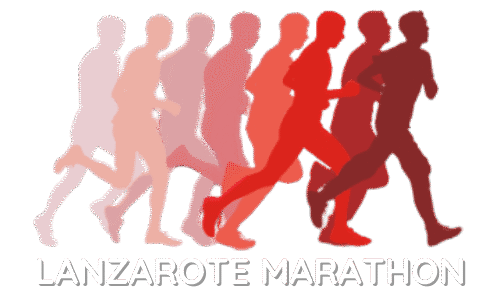
Top 10 Different Types of Sports Injuries
Are you an athlete? Do you play competitive sports? Do you care about your health and well-being?
Providing your body with the energy it needs every day begins with knowing the different types of sports injuries. Sports injuries can happen to the best of athletes, and prevention is crucial to playing a sport well.
But what are the top sports injuries? How can you protect yourself from going through dire pain in your sports career? This article will answer those questions and more. Read on to make smart decisions about your health and well-being!
1. Sprains
Sprains are one of the most common sports injuries. They occur when ligaments connecting bones to one another stretch beyond their limit.
Among the most prevalent injuries are sprains, frequently occurring in areas such as the knees, ankles, and wrists. These sprains are typically the result of sudden twists, often associated with falls or abrupt movements. The vulnerability of the ankles, in particular, makes them prone to sprains, causing discomfort and ankle pain. Sports enthusiasts are particularly susceptible to such injuries due to the dynamic nature of many athletic activities. Addressing these concerns necessitates specialized care, and podiatry plays a crucial role in managing ankle pain and sports-related sprains. Seeking assistance from reputable clinics offering podiatry ryde or other locations becomes essential for comprehensive evaluation, treatment, and rehabilitation tailored to address the unique aspects of these injuries.
Symptoms can include swelling and pain, difficulty bearing weight, and a feeling of instability. Treatment should include rest, ice, compression, and elevation (RICE) to reduce pain and swelling. Other treatments could include immobilization in a brace or splint, physical therapy, and restorative exercises.
While sprains can be painful injuries, they can also be prevented. This is by wearing appropriate footwear and engaging in appropriate stretching exercises.
2. Strains
Strain injuries are the most common type of sports injury. They’re caused by overstretching of muscle fibers, resulting in tears and other damages.
These injuries are typically characterized by pain and swelling around the affected area. They often occur during sudden, unexpected movements such as when changing direction quickly.
To avoid strains, it is important to properly warm up and stretch before engaging in physical activity. Common types of strains include hamstrings, quadriceps, calf, hip flexor, and rotator cuff injuries. As these are the most common type of sports injuries, it is important to understand how to prevent and treat them appropriately.
3. Knee Injuries
Knee injuries are among the most common types of sports injuries. This is particularly for athletes involved in high-impact activities. This includes football, basketball, running, and soccer.
These injuries can range from minor issues such as muscle strains, anterior cruciate ligament (ACL) tears, and meniscus tears, to more serious issues such as patellofemoral syndrome and dislocated knees. Other knee injuries that can arise from sports include torn knee ligaments and tendons. These can also be dislocated kneecaps and fractures.
Athletes need to work to strengthen knee ligaments and muscles. Doing so will prevent further injury and prevent muscle imbalances that could affect performance.
4. Swollen Muscles
The body contains more than 600 muscles, which may become swollen due to a sports injury. Depending on the cause and severity of the injury, swelling can take several days or weeks to subside.
Treatment for swollen muscles will vary depending on the injury but can include rest, ice, compression, and elevation. Some people also tend to opt for sports massage or swedish massage from an experienced massage therapist in their area, as it can help alleviate pain and reduce swelling in the muscles. Additionally, certain massage techniques focus on improving circulation, which can remove the excess fluid and waste products that might contribute to the swelling. In some cases, stretching exercises, physical therapy, medications, or surgery may be required to heal swollen muscles. Keep in mind, wearing protective gear and being aware of warm-up and cool-down exercises can help reduce the risk of muscle injuries.
5. Achilles Tendon Rupture
Achilles Tendon Rupture is one of the most serious and demanding types of sports injuries. The Achilles Tendon is a large band of connective tissue that attaches your calf muscle to the back of the heel bone. Any tear or rupture to this tendon can be extremely painful and debilitating.
It is commonly caused by landing incorrectly after a jump. Other causes include extreme stretching or overloading the leg muscle beyond its capability.
The injury tends to occur most often in sports that involve sprinting, jumping, and forceful stopping. Its seriousness is paramount and a ruptured Achilles Tendon can take six months to recover fully, with a course of physiotherapy, rest, bracing, and the use of crutches.
6. Fractures
Fractures are a common sports injury, typically caused by trauma to the bone. The most common fractures in athletes include bone fractures in the foot, ankle, shoulder, hand, and leg. Stress fractures often occur in the foot or leg due to overuse.
Fractures can heal with rest and treatment, and some require surgery. Recovery times depend on the severity of the fracture and the treatment prescribed by the doctor. Undergoing some kind of diagnostic medical imaging in Vernon (or elsewhere) may be necessary to determine the severity of the fracture. Wearing proper protective gear can reduce the risk of fractures caused by trauma or contact with another player.
7. Dislocations
Dislocations are one of the most common sports injuries, specifically in contact sports such as football and rugby. A dislocation occurs when the bones of a joint move out of the normal alignment. Common sites of dislocation in athletes include the shoulder, elbow, ankle, hip, and knee.
Depending on the severity of the injury, dislocated joints can be treated with nonsurgical approaches. This includes immobilization with a brace or sling, ice/heat applications, physical therapy, or in some cases, surgery.
8. Mouth Injury
If players aren’t using effective protective mouth gear while playing the sport, they can become vulnerable to having their teeth knocked out by a high-speed ball or in collisions with fellow players.
Such injuries can be extremely painful and dangerous, potentially resulting in severe complications such as excessive bleeding, infection, and damage to the teeth, which may necessitate immediate attention of an Emergency Orthodontist to prevent further damage and control the bleeding.
Additionally, players on the field may experience bruises on their cheeks, cuts on their lips, or, in extreme cases, jaw dislocations. Therefore, taking preventative measures and wearing sturdy protective gear is absolutely crucial.
9. Groin Pull
A groin pull, medically referred to as a muscle strain, is a common sports injury. This injury occurs when the muscles in the inner thigh are overstretched or torn. Groin pulls can be caused by sudden activity or a sudden change in direction.
Symptoms of a groin pull may include pain, swelling, and tenderness in the inner thigh. Treatment for a groin pull may involve rest, ice, elevating the injury, and/or gentle stretching. Depending on the severity of the strain, a groin pull can take days, weeks, or months to fully heal.
10. Concussion
A concussion is a type of sports injury that can have lifelong implications if not treated appropriately. Concussions are caused by a blow to the head or a jarring of the body that results in a temporary change in the brain’s functioning.
Common symptoms of a concussion include headaches, confusion, memory problems, balance problems, and a decrease in physical coordination. Coaches and athletes need to be aware of the risks associated with concussion injuries. Also, take precautions to prevent them.
All these injuries can lead to missed games, missed practices, and long-term physical effects. It is important to make sure that any type of sports injury is taken seriously, diagnosed properly, and treated properly. This can avoid long-term damage.
